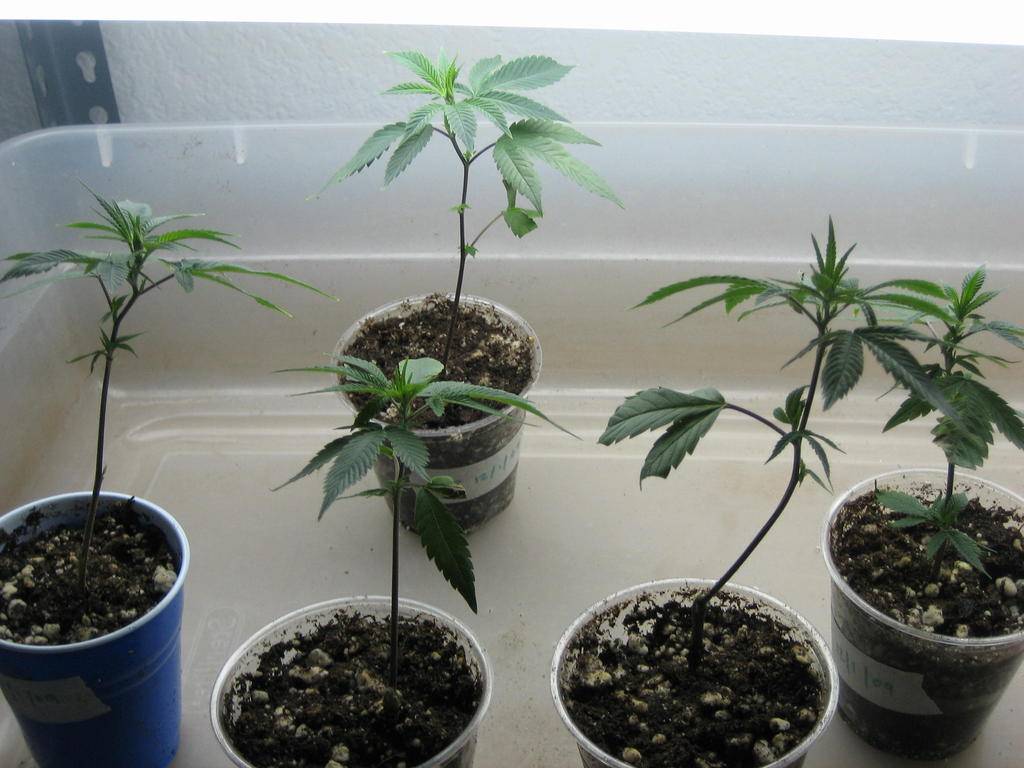Hey guys, So here is the deal... I work at a local cannabis club 100% cali legal, I also vend on a small basis to this same club, but the opportunity is there to be a grower for the club exclusively. I love organic pot but with the biz like it is at the moment chem grown weed is all the rage because of the ease of production. A couple days ago I went into the club and purchased 5 bull rider clones. As of now they are in fox farm light warrior, they will stay there for up to a couple weeks before being transplanted -- hopefully into my own mix, if not I have some happy frog that I planned to cut with coco to help with aeration. The bullrider girls will be vegged for about a month, maybe a little shorter depending on growth rate, under a 400w cmh. The plants will be topped once so they have two main colas (and a few secondary branches) and then the largest/healthiest 4 (the 5th will be kept as a mother) will be flowered under 1200w of HID (perhaps 2400 if I get the $ to do so). This is a test. Not only for myself but for the viability of organic growing methods in the eyes of this club owner. He knows what good bullrider is like, I want to show him what amazing organic bullrider is like. If I can pull this off, yield well, and produce a great finished product i may be able to convince the owner to start an entire organic line for his club and hopefully convert his entire in-house grow to organic. I really believe that organics can yield as much or almost as much as chem and that the lower overhead more than justifies the method from a business sense. Your help in the matter would be more than appreciated and may even help to further the growth of organic methods.
Im finally getting around to making my own organic soil. I want to reuse this soil and have it be coco based. Here is what I want to do... a modified LC #1 mix, hopefully the soil heads in this forum can let me know if this will be acceptable to pull off a healthy organic crop -
LC’s Soiless Mix #1:
5 parts 50%coco/50% peat moss (is this ok for the base??)
3 parts perlite
2 parts wormcastings or home made compost ( i have both, but the wormcastings is bagged and not fresh and the compost has been in my garage for a few months, which one is better to use or should I use both?)
Powdered (All I can find is the pellets, i know you can't use those but can I use a blender and coffee grinder or should I seek out the factory made powdered dolomite lime???) dolomite lime @ 2 tablespoons per gallon or 1 cup per cubic foot of the soiless mix.
...Wal-Mart now sells worm castings.
I plan to feed with ACTs and or soil drenches/top dressings once a week
The goal is to yield 3 oz per plant. Though Im not tied to that, two would suffice for now.
Any helps, tips, comments, or questions along the way are welcome.

Im finally getting around to making my own organic soil. I want to reuse this soil and have it be coco based. Here is what I want to do... a modified LC #1 mix, hopefully the soil heads in this forum can let me know if this will be acceptable to pull off a healthy organic crop -
LC’s Soiless Mix #1:
5 parts 50%coco/50% peat moss (is this ok for the base??)
3 parts perlite
2 parts wormcastings or home made compost ( i have both, but the wormcastings is bagged and not fresh and the compost has been in my garage for a few months, which one is better to use or should I use both?)
Powdered (All I can find is the pellets, i know you can't use those but can I use a blender and coffee grinder or should I seek out the factory made powdered dolomite lime???) dolomite lime @ 2 tablespoons per gallon or 1 cup per cubic foot of the soiless mix.
...Wal-Mart now sells worm castings.
I plan to feed with ACTs and or soil drenches/top dressings once a week
The goal is to yield 3 oz per plant. Though Im not tied to that, two would suffice for now.
Any helps, tips, comments, or questions along the way are welcome.


